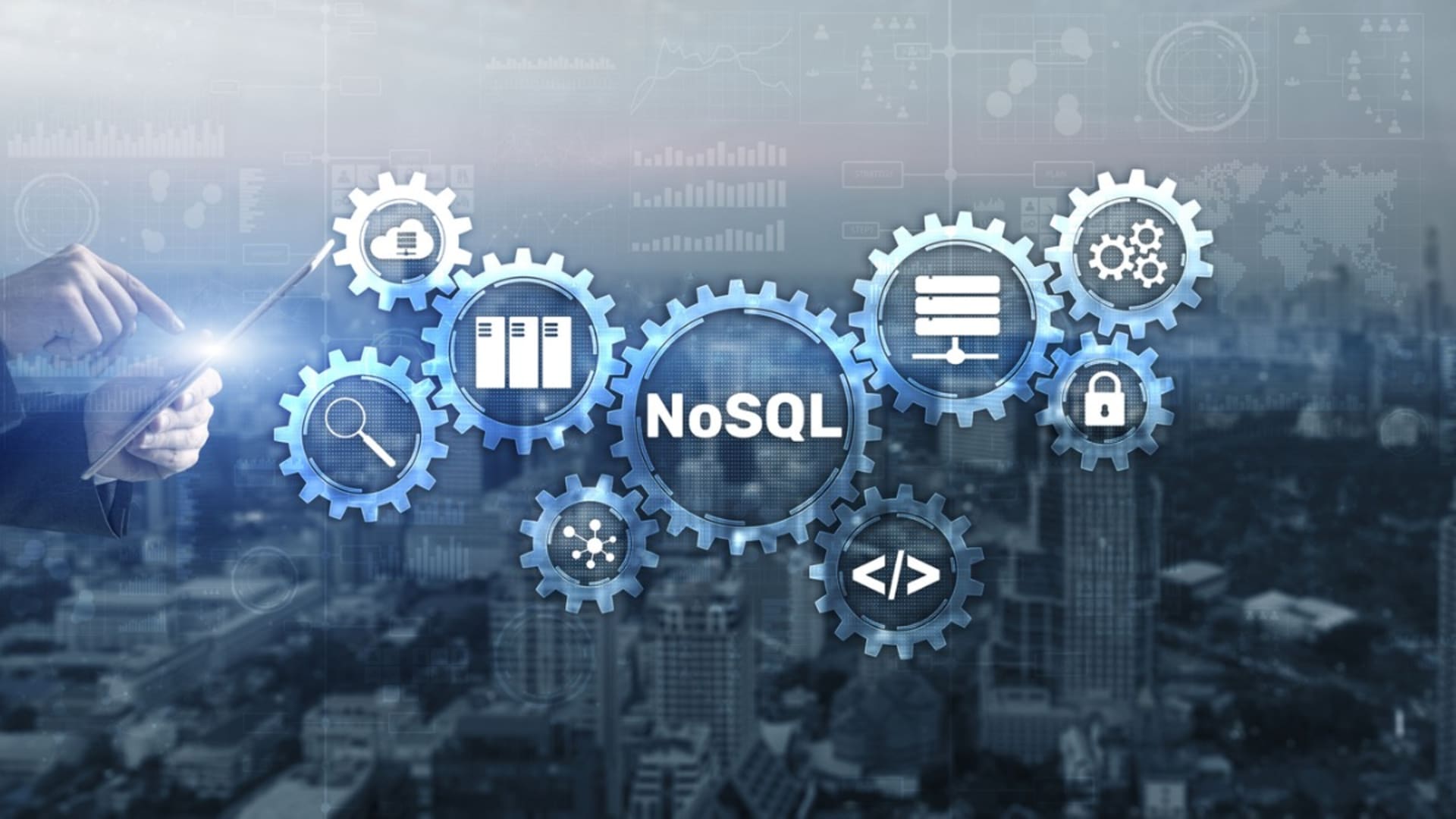Data drives business — there’s no question about it. Without data, every business on the planet would struggle to successfully bring products to market in this world of ever-growing challenges. You see, part of the problem is that with each passing day, there are more and more businesses vying for consumers’ attention.
You might have the best idea for a product, but if you don’t have the necessary data to help you market that product to the right audience, you will struggle to achieve your goals. That means you need to make use of a highly scalable database for your purposes.
But there are so many types and options, from traditional relational databases (SQL databases) to NoSQL. It can be confusing to find a flexible data model that will store data, make sense of the information, and facilitate the process of retrieving data. Fortunately, you don’t have to have a certification in data science to solidify your practices.
We recommend finding a top NoSQL database.
Although most traditional applications such as WordPress run on SQL databases, many modern applications that work with massive amounts of unstructured data depend on NoSQL databases. Without this type of database, your business wouldn’t be able to work with the information in ways that would benefit your marketing, sales, and management teams.
Think about that. In this modern era, you need to give your teams every advantage they can get because you can bet the competition certainly is. That means the right means of storing data, maintaining data integrity, and leveraging it effectively for modern use cases.
What Are NoSQL Databases?
The 2 most widely used databases are SQL (relational) and NoSQL (non-relational). But what does that mean? And what’s the difference between them?
The primary distinction is that a NoSQL database works with dynamic schema, which allows you to use unstructured data. That means that you can build an application without having to construct a database schema first.
When you build an application with a relational database, you must know how the application will work with specific tables that are made up of rows and columns. Before you add that 1st piece of data to the database, the schema must be defined. Neglect that, and your application will not be able to work with the database.
On the other hand, a NoSQL database does not require the use of structured data. With this type of database, the data requirements can evolve as needed, without causing problems with the database. In fact, a NoSQL database can work with and stores data of all types, including:
- Video clips
- Mobile device activity
- Social media usage
- Text documents
- Images
Many companies use NoSQL databases, such as:
- Amazon
- Adobe
- Capgemini
- SAP
- Qualcomm
- J.P. Morgan
If your business is considering adopting a NoSQL database or is planning to build an app that depends on data, know that if you opt to go this route, you are in good company. Given that many Fortune 500 companies depend on NoSQL databases, this technology has proven itself to be the best option for applications and services at scale.
Compared to the relational database, the NoSQL database means you’re not just limited to text-only entries. And because these databases have become so crucial to enterprise businesses everywhere, you should have no trouble finding a strong NoSQL development company to hire.
What Are the Main Benefits of NoSQL Databases vs. Relational Databases?
NoSQL offers plenty of benefits over the traditional SQL database, such as:
- SQL databases are vertically scalable but have significant associated costs associated with scaling, whereas NoSQL databases can scale without incurring the same costs.
- NoSQL databases are considerably more reliable at scale.
- NoSQL databases are better suited for modern applications with complex, constantly changing datasets, especially at scale.
- NoSQL databases can store and process data in real-time, so not only are they more scalable, but they also have a considerably better performance.
Making the switch from an SQL to a NoSQL database isn’t nearly as easy as, say, switching from one office suite to another. There are certain things you must consider when you’re grappling with structured and unstructured data.
Things To Consider When Choosing a NoSQL Database
When making the switch, you will want to consider the following factors:
-
- Cost: Does your company have the budget to train your staff to use databases, or are you able to hire the required staff?
- ACID: Does your data require ACID properties? If so, you’re better off sticking with existing SQL databases.
- Scalability: Does your application need to scale on the level of, say, Facebook? If so, NoSQL will be a requirement.
- Savings: Will migrating to a NoSQL database save your company money? It’s not just about training but also deployment and management. Keep those costs in mind when you’re considering the switch.
- VC Money: Are you creating a startup company that depends on venture capital? If so, it’s best to consider a NoSQL database because most Silicon Valley VCs won’t think twice about a company using an SQL database. It’s all about perception.
- High Availability vs. Reliability: Does your application require high availability over data reliability? If so, go with a NoSQL database, otherwise stick with SQL.
Now that you have an idea of what NoSQL databases are good for (and whether you should be using one), let’s take a look at some of the best versions available in 2023.
The 4 Best NoSQL Databases Available in 2023
Anyone looking to adopt a NoSQL database for a scalable application should seriously consider any one of the following options.
#1 MongoDB
MongoDB is an object-oriented, scalable NoSQL database that is based on the NoSQL document store model. This database stores objects as separate documents within a collection with JSON-like documents.
MongoDB was originally created by 10gen software in 2007 as a component for a platform as a service product. 10gen shifted in 2009 to an open-source database model while offering commercial support. In 2013, 10gen changed its name to MongoDB Inc. and stuck with the open-source license.
MongoDB is now a publicly traded company, with headquarters in both the United States and Ireland.
Key Features // Product Highlights
- Ad-hoc queries – MongoDB makes it possible for optimized, real-time analytics of data.
- Improved indexing – MongoDB indexing can accommodate real-time, constantly changing query patterns.
- Better replication – MongoDB handles replication, so it is easier to achieve high availability.
- Sharding – MongoDB supports sharding, so larger datasets can be spread out via multiple distributed collections.
- Load balancing – With the help of sharding and replication, MongoDB supports large-scale load balancing.
#2 Apache Cassandra
Apache Cassandra is a distributed, wide-column-store, open-source NoSQL database management system. From the start, this database was designed to handle vast amounts of data across clusters of off-the-shelf servers, so it is capable of scaling without having to purchase specialized, costly hardware.
Apache Cassandra was originally created by Avinash Lakshman and Prashant Malik to power the Facebook index search feature. In July 2008, Cassandra was released as an open-source project on Google Code, and in March 2009, it became an Apache incubator project, only to graduate to a top-level project on February 17, 2010.
Key Features // Product Highlights
- Distributed database – Apache Cassandra was created to run over multiple nodes of equal significance, which means there is no “master” and there are no bottlenecks.
- Elastic scalability – Apache Cassandra can be scaled up or down with little-to-no resistance.
- Cassandra Query Language – Apache Cassandra uses its own query language, which is similar to the SQL query language.
- Fault tolerant – Due to its data replicative ability, Cassandra is inherently fault tolerant.
#3 Redis
Redis is another open-source NoSQL database that works in memory. Redis can also be used as a cache and message broker, making it a bit more flexible than some other NoSQL databases.
Redis supports data structures like strings, hashes, lists, sets, sorted sets with ranged queries, bitmaps, hyper logs, streams, and geospatial indexes with radius queries.
Redis was originally created by Salvatore Sanfilippo, who was trying to improve the scalability of his startup. The goal of the company was to develop a real-time web log analyzer, which traditional databases couldn’t support. In 2009, Sanfilippo prototyped a proof-of-concept version of what would later become Redis. Very quickly, the project was noticed and was soon adopted by the likes of GitHub and Instagram.
Key Features // Product Highlights
- Performance – Redis data resides in memory, which makes it possible to achieve very low latency and high throughput.
- Flexible data structures – Redis supports a large number of data structures, so you’re not limited in the type of data used.
- Simplicity – Redis is considerably easier to use than other NoSQL databases.
- Replication and persistence – Redis supports replication and persistence for reliable data storage and retrieval.
- High availability and scalability – Because Redis is an in-memory database it can achieve massive scalability while still delivering reliable availability.
#4 Couchbase
Couchbase, a NoSQL database that was originally named Membase, is an open-source, distributed, multimodel, document database that has been specifically optimized for interactive applications.
Membase was created by several team members of the Memcached project after they had founded a company called NorthScale. The goal of NorthScale was to develop a key-value store that offered the simplicity, speed, and scalability of Memcached and the storage, persistence, and querying capabilities of a database.
Membase announced a merger with CouchOne (the company behind CouchDB) on February 8, 2011, which is where the Couchbase name comes from.
Key Features // Product Highlights
- SQL++ engine – With this, Couchbase enjoys SQL queries on JSON data.
- JSON data – This means it is flexible, human-readable, and easy to manage.
- Fast – Couchbase includes a built-in managed cache for speed.
- Scopes and collections – Couchbase uses data organization that is similar to relational schemas and tables, so it should be instantly familiar.
- Cloud-friendly – Couchbase is perfectly at home with cloud-native development and applications.
NoSQL: The Bottom Line
If your business is serious about developing applications that can achieve considerable scale, availability, and flexibility, you will need to employ a NoSQL database. Once you have decided on which to use, you’ll want to make sure your teams follow NoSQL best practices in order to ensure your application deployment, usage, and management are a success.











